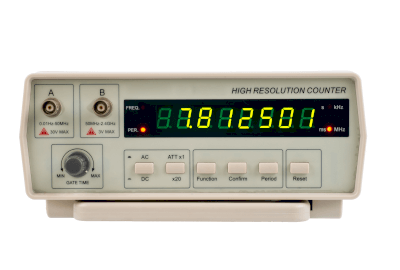What Is a Universal Counter?

A universal counter is an advanced type of counter for electrical signals, offering additional functionalities beyond the standard period and frequency measurement capabilities of a frequency counter. It can measure pulse width, phase, period relative to pulse width, and the rise and fall times of signals. Additionally, it measures the time difference between two input signals and their frequency ratio, making it a versatile measuring instrument.
Some models can analyze and display data stored over a certain period.
Uses of Universal Counters
Universal counters are instrumental in product development, particularly for circuit design and operational verification of boards based on design results. They are also valuable in technical education settings.
On production and inspection lines, these counters are useful for verifying if the expected frequency and other parameters meet specified values.
While historically expensive due to the need for dedicated logic circuits, recent advancements in low-cost, high-functionality microcomputers and peripheral ICs have made universal counters more affordable.
Principles of Universal Counters
The universal counter measures frequency, a numerical indicator of the number of signals per unit time in a repetitive signal, through the following process:
Initially, input signals are waveform-shaped into clean signals for accurate measurement (signal A). Simultaneously, a gate signal (signal B) specifies the measurement period for signal A. The counter takes the AND of signals A and B and counts the outputs. By counting the number of A signals within a specific period of signal B, the frequency of signal A is determined and displayed on an LCD or through the counter interface.
Most universal counters simplify circuit configuration by using a built-in microcontroller to set the frequency of the gate signal and count the gated signals.